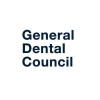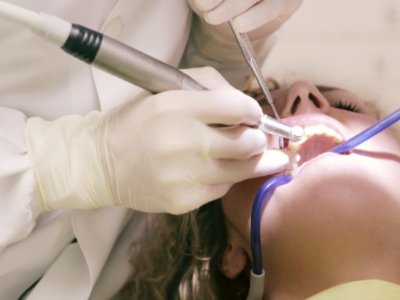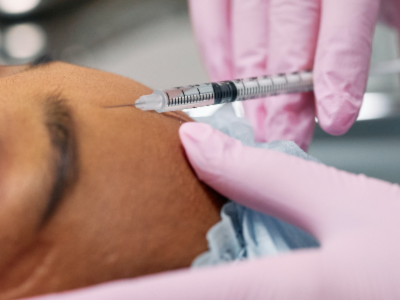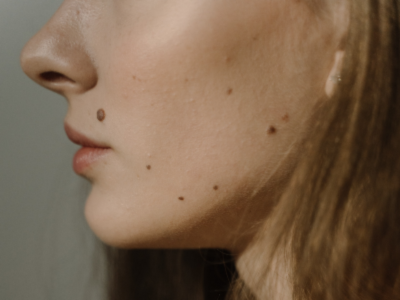Dental Crowns & Bridges in Southend-on-Sea, Essex at JR Medical
 Dental Crowns
Dental Crowns
A dental crown functions as a protective cap that restores weak, broken, compromised or decayed teeth. These crowns can be crafted from various materials, such as metal, resin or porcelain.
You may have a crown covering a less visible molar, only revealing itself during wide yawns. Alternatively, you might possess crowns on your front teeth, meticulously designed to blend seamlessly with your existing teeth. To ensure a proper fit, a dentist will need to remove a small amount of enamel before bonding your new crown in place.
When confronted with a sizable cavity that exceeds the capacity of a filling, the consideration of a dental crown becomes relevant.
Furthermore, a dental crown may be necessary when your tooth exhibits:
- Severe wear.
- Cracks.
- Weakening.
Additionally, dental professionals often recommend crowns following a root canal procedure, as the treated tooth becomes more vulnerable and requires shielding.
In cases of a missing tooth where the dentist intends to place a dental bridge or a tooth implant, you may also qualify as a candidate for a crown.
Types of Crowns
Numerous types of dental crowns are available, and the choice depends on your personal preferences and specific oral health requirements.
Metal Crowns
- Dental technicians use various metals, such as gold, palladium, nickel, and chromium, to craft metal crowns.
- These crowns are highly resistant to chipping or breakage, exhibit exceptional durability, and involve minimal enamel removal.
- They can withstand the forces of biting and chewing.
- However, their metallic appearance makes them suitable for molars not readily visible.
Porcelain-Fused-to-Metal (PFM) Crowns
- PFM crowns blend the robustness of metal with the natural appearance of porcelain.
- Dentists can match PFM crowns to the shade of your natural teeth.
- Nonetheless, PFM crowns have some drawbacks, including potential porcelain chipping over time and gradual enamel wear on opposing teeth.
- They are suitable for both front and back teeth.
Pressed Ceramic Crowns
- Pressed ceramic crowns feature a sturdy ceramic inner core, resembling PFM crowns but with a ceramic core instead of metal.
- Technicians create the ceramic core by melting and pressing ceramic material at high temperatures, adding multiple layers of porcelain for a lifelike appearance.
- Like PFM crowns, they can chip over time and are suitable for front and back teeth.
All-Ceramic or Porcelain Crowns
- These crowns closely mimic natural tooth enamel in appearance and are an excellent choice for those with metal allergies.
- Lab technicians employ various materials, with zirconium dioxide being a popular choice.
- Zirconia crowns are exceptionally durable, capable of withstanding substantial forces and causing less enamel wear on opposing teeth.
- They are suitable for both front and back teeth.
All-Resin Crowns
- Resin crowns are generally more affordable but tend to be less durable and prone to breakage compared to other crown types, particularly PFM crowns.
- Resin crowns are often used for temporary purposes and have an average lifespan of three to five years.
Zirconia Crowns
- Zirconia crowns are renowned for their exceptional strength and durability.
- They can withstand the significant forces exerted by the back teeth during chewing, making them a suitable choice for posterior crowns.
- The strength of zirconia minimizes the amount of tooth preparation required by the dentist.
- Research indicates that zirconia-based crowns exhibit longevity comparable to metal-based crowns.
- A randomized controlled trial published in the Journal of Dentistry in 2017 found that zirconia-based crowns remained robust over a 5-year period.
- Monolithic zirconia crowns, in particular, are noted for their durability.
- Zirconia is favoured by many dentists due to its biocompatibility, meaning it is less likely to trigger adverse bodily reactions or immunological responses, such as inflammation.
- A 2016 in vitro study affirmed zirconia's biocompatibility and reported only limited cytotoxicity.
The Risks & Benefits of Dental Crowns
Dental crowns offer notable advantages, primarily the potential to extend the lifespan of a natural tooth. Specifically, crowns can:
- Address issues like wear, breakage, or tooth decay.
- Safeguard teeth from erosion and excessive wear.
- Enhance chewing functionality.
- Improve your overall dental appearance.
- Maintain their integrity for a period ranging from five to 15 years, provided they receive proper care.
However, there are also certain disadvantages associated with dental crowns. For instance, crowns:
- Necessitate the removal of some natural tooth enamel.
- May lead to tooth sensitivity, particularly in the initial weeks after placement.
- Can fracture or break over time.
- Might trap bacteria and contribute to decay if they do not fit correctly.
- Pose a rare risk of triggering allergic reactions in certain individuals.
- Can entail a significant cost.
Inlays and Onlays
Also referred to as "indirect fillings," dental inlays and onlays serve as a solution for restoring teeth that have suffered significant decay or chipping, surpassing the suitability of traditional fillings.
These restorations offer durability, strength, and a natural appearance, all while being a more conservative and less invasive alternative to dental crowns. They are typically applied to the posterior (back) teeth in your mouth.
Unlike standard fillings, inlays and onlays contribute to the reinforcement of the tooth's structure rather than weakening it. They are custom-crafted to precisely fit your tooth cavity and are securely bonded in place, ensuring robustness and long-lasting performance. Following the procedure, the tooth can withstand 50-75% more chewing force than before.
Inlays are affixed within the central area of the tooth, encompassing the cusps (the raised points on your teeth) or the rounded edges.
Onlays resemble inlays but are employed when the tooth damage extends over one or more cusps, covering the entire chewing surface.
With proper care, dental inlays and onlays can endure for up to 30 years.
In situations involving extensive tooth damage, dental crowns may be a viable alternative. However, given that crowns necessitate the removal of a significant portion of tooth structure, dental inlays and onlays are generally preferred, as they entail minimal tooth reduction and are less damaging.

Dental Bridges
Dental bridges serve as replacements for missing teeth, addressing both singular tooth loss or a series of missing teeth. They offer benefits such as restoring chewing function, enhancing your dental aesthetics, and promoting oral health. A dental bridge comprises crowns, which are positioned over your natural teeth on either side of the gap, along with artificial teeth that effectively "bridge the gap" within your smile. This appliance aptly lives up to its name by closing the visual void in your dental structure. Dentists can tailor custom bridges to harmonize with the natural shade of your teeth.
A dental bridge comprises several key components:
Abutments: These are the supporting structures for your dental bridge. While typically referring to natural teeth, the term can also encompass small connector posts utilised in dental implant-supported bridges.
Pontics: These artificial teeth serve to fill the void created by missing teeth. Depending on your specific case and the type of bridge chosen, your bridge may incorporate one or more abutments and one or more pontics.
When Might I Need a Dental Bridge?
The necessity for a dental bridge arises when you experience the repercussions of missing one or more teeth, which can have several adverse effects on your well-being. A dental bridge can effectively address these changes, encompassing:
- Restoring Your Smile: By filling the gap left by missing teeth, a dental bridge helps restore the completeness of your smile, enhancing its appearance.
- Recovering Proper Chewing Function: Dental bridges facilitate the restoration of your ability to chew food effectively and comfortably.
- Improving Speech and Pronunciation: Missing teeth can impact your speech and pronunciation, and a dental bridge aids in regaining clarity in your verbal communication.
- Maintaining Facial Shape: Dental bridges play a role in preserving the natural shape of your face, preventing potential changes that may occur due to tooth loss.
- Re-establishing Bite Alignment: A dental bridge contributes to the re-adjustment of your bite, ensuring that the force is evenly distributed when you chew.
- Preventing Tooth Misalignment: By occupying the space left by missing teeth, a dental bridge helps prevent your remaining teeth from shifting out of their correct positions, thereby preserving overall dental alignment.
Types of Dental Bridges
There are various types of dental bridges that dentists employ based on your specific oral health objectives. The primary four categories of dental bridges include:
Traditional Dental Bridge
This is the most commonly used type, comprising dental crowns (caps) on both ends with artificial teeth (pontics) positioned in between. The crowns are securely bonded to your healthy natural teeth (abutments) on either side of the gap, with the pontics filling the space. Traditional dental bridges are suitable when you possess healthy natural teeth on both sides of the gap.
Cantilever Dental Bridge
Similar to a traditional bridge, the cantilever bridge features a crown on one end, not both. When your dentist affixes the bridge to your abutment tooth, the artificial tooth (pontic) extends over or "hangs" across the gap. Cantilever bridges are utilized when you have natural teeth only on one side of the gap. However, due to their design, they are not as robust as traditional bridges.
Maryland Dental Bridge
Also known as a resin-bonded bridge, the Maryland bridge employs metal wings instead of crowns to secure the bridge. Dentists bond these wings to the backs of your adjacent teeth, effectively anchoring the bridge. Maryland bridges are typically used for replacing front teeth but are not suitable for withstanding the chewing forces exerted on back teeth.
Implant-Supported Bridge
Resembling a traditional bridge, an implant-supported bridge is situated atop dental implants rather than natural teeth. Dental implants are small threaded posts that serve as replacements for missing tooth roots. Before attaching a bridge to dental implants, the implants must fully integrate (fuse) with your jawbone. This integration process typically takes three to six months on average, though it may extend longer depending on your specific circumstances. Implant-supported bridges are employed when you have a series of three or more missing teeth in a row.
The Risks & Benefits of a Dental Bridge
Dental bridges can provide several benefits, including:
- Delivering a natural-looking solution for tooth loss.
- Restoring the ability to chew and speak effectively, addressing difficulties that can arise from missing teeth.
- Preventing adjacent teeth from shifting into the gap created by the absence of teeth.
Nevertheless, dental bridges are not without their drawbacks:
- Damage to the supporting abutment teeth due to decay or trauma can compromise the integrity of the dental bridge.
- Insufficient strength in the abutment teeth may result in their fracture when supporting the bridge.
- Neglecting proper cleaning of the bridge and the underlying gum tissue can lead to plaque and bacterial buildup, potentially causing gum inflammation or cavities.
Call JR Medical now on 01702 314497
All of our services cover the whole of Southend-on-Sea including Westcliff-on-sea, Leigh-on-Sea, Rochford, Hadleigh and Benfleet. We also cover a wider area of Essex, including Rayleigh, Basildon, Grays and Thurrock.














